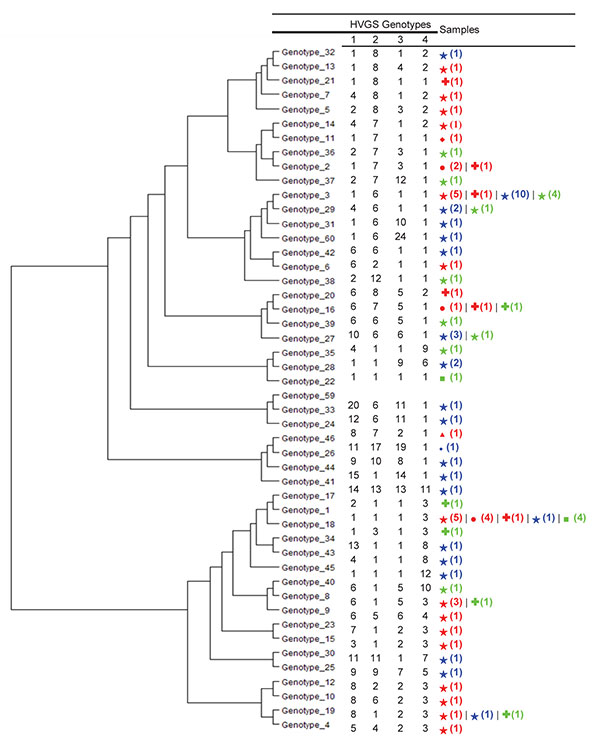Volume 16, Number 5—May 2010
CME ACTIVITY - Research
Tropheryma whipplei in Children with Gastroenteritis
Figure 1

Figure 1. Dendogram constructed by using unweighted pair group method with arithmetic mean and 4 highly variable genomic sequences (HVGS), showing phylogenetic diversity of 48 genotypes of 81 Tropheryma whipplei strains detected in 34 children with diarrhea (blue), 40 adult patients with Whipple disease (red), and 22 asymptomatic adult patients without Whipple disease (green) (including 11 sewer workers), Marseille, France. Sequences were concatenated to construct the dendrogram. Numbers in parentheses indicate number of genotyped samples for each category. Stars, France; crosses, Switzerland; circles, Germany; diamond, Italy; square, Austria; triangle, Canada; small circle, Comoros.
Page created: December 23, 2010
Page updated: December 23, 2010
Page reviewed: December 23, 2010
The conclusions, findings, and opinions expressed by authors contributing to this journal do not necessarily reflect the official position of the U.S. Department of Health and Human Services, the Public Health Service, the Centers for Disease Control and Prevention, or the authors' affiliated institutions. Use of trade names is for identification only and does not imply endorsement by any of the groups named above.